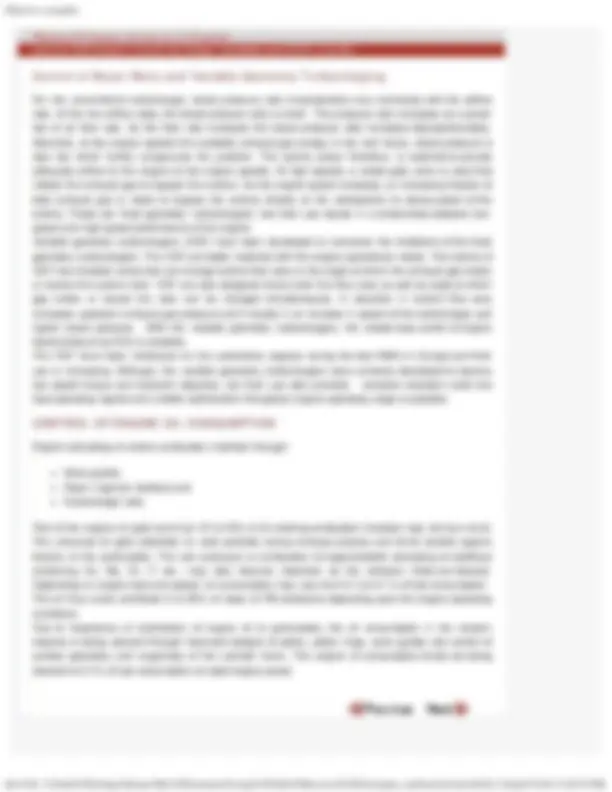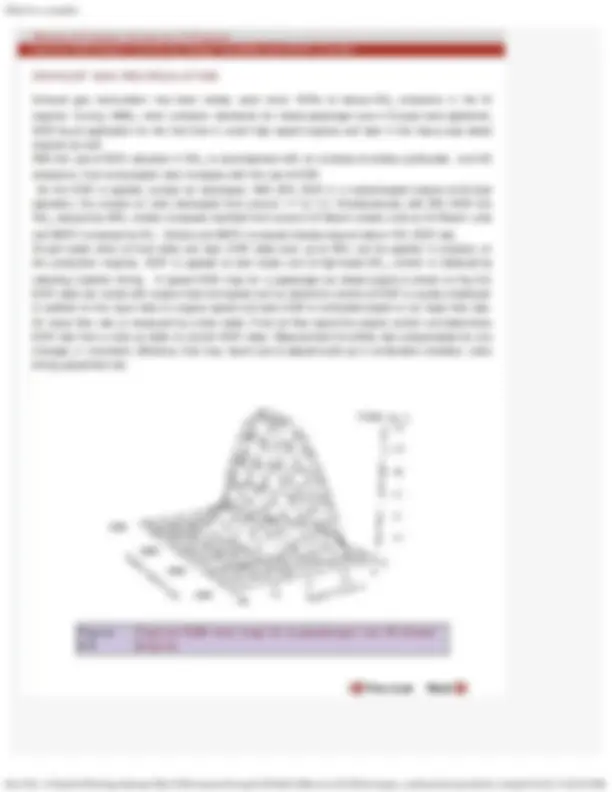






Study with the several resources on Docsity

Earn points by helping other students or get them with a premium plan


Prepare for your exams
Study with the several resources on Docsity

Earn points to download
Earn points by helping other students or get them with a premium plan
Community
Ask the community for help and clear up your study doubts
Discover the best universities in your country according to Docsity users
Free resources
Download our free guides on studying techniques, anxiety management strategies, and thesis advice from Docsity tutors
A part of a lecture series on emission control for compression ignition (ci) engines. Lecture 28 continues the discussion on emission control by design variables and exhaust gas recirculation (egr), focusing on turbocharging, control of boost ratio and variable geometry turbocharging, engine oil consumption, and egr systems for turbocharged engines. The lecture covers the advantages and disadvantages of turbocharging, control of boost ratio, and the use of cooled and un-cooled egr systems.
Typology: Study notes
1 / 8

This page cannot be seen from the preview
Don't miss anything!





Presently, almost all the modern light, medium and heavy-duty diesel engines are turbocharged. A turbocharger consists of a turbine driven by the engine exhaust gas which is directly coupled to a compressor. The fresh air from the atmosphere is drawn into the compressor of turbocharger where its pressure and hence density are raised before it enters the engine cylinder The higher mass flow of air in the turbocharged engines compared to the naturally aspirated engines of the same swept volume, results in an increase in engine power, lower fuel consumption, better transient operation response and lower specific exhaust emissions (in g/kW-h). Advantages of turbocharging are;
With turbocharging, excess air of more than 50% can be easily used in DI engines while still developing enough engine power. Due to higher air density and higher temperatures at the end of compression stroke shorter ignition delay period is obtained. As a result of shorter ignition delay period , the fraction of fuel burned during premixed combustion phase decreases resulting in lower NO (^) x emissions. A shorter delay period gives lower HC emissions. With turbocharging, the injection timing can be retarded to further lower NO (^) x emissions without compromising fuel efficiency and power. High excess air results in lower soot emissions. Inter-cooling of the boosted air charge further increases charge density and lower intake temperatures helps in reducing NO (^) x emissions.
The effect of turbocharging (TC), aftercooling (TCA) and injection retard typically observed on the NO (^) x –
particulate trade off compared to naturally aspirated diesel engines is shown in Fig. 6. 8.
For the conventional turbocharger, boost pressure ratio characteristics vary nonlinearly with the airflow rate. At the low airflow rates, the boost pressure ratio is small. The pressure ratio increases as a power law of air flow rate. As the flow rate increases the boost pressure ratio increases disproportionately. Secondly, at low engine speeds the available exhaust gas energy is low and hence, boost pressure is also low which further compounds the problem. The turbine power therefore, is matched to provide adequate airflow to the engine at low engine speeds. At high speeds, a waste gate valve is used that makes the exhaust gas to bypass the turbine. As the engine speed increases, an increasing fraction of total exhaust gas is made to bypass the turbine directly to the atmosphere to reduce power of the turbine. These are ‘fixed geometry’ turbochargers’ and their use results in a compromise between low- speed and high-speed performance of the engine. Variable geometry turbochargers (VGT) have been developed to overcome the limitations of the fixed geometry turbochargers. The VGT are better matched with the engine operational needs. The turbine of VGT has movable vanes that can change turbine flow area or the angle at which the exhaust gas enters or leaves the turbine rotor. VGT are also designed where both the flow area as well as angle at which gas enters or leaves the rotor can be changed simultaneously. A reduction in turbine flow area increases upstream exhaust gas pressure and it results in an increase in speed of the turbocharger and higher boost pressure. With the variable geometry turbochargers, the closed loop control of engine boost pressure by ECU is possible. The VGT have been introduced on the automotive engines during the late 1990’s in Europe and their use is increasing. Although, the variable geometry turbochargers were primarily developed to improve low speed torque and transient response, but their use also provides emission reduction under low load operating regime and a better optimization throughout engine operating range is possible.
Engine lubricating oil enters combustion chamber through;
Valve guides, Piston ring/liner interface and Turbocharger seal.
Part of the engine oil gets burnt but 10 to 40% of oil entering combustion chamber may not burn at all. The unburned oil gets adsorbed on soot particles during exhaust process and forms soluble organic fraction of the particulates. The ash produced on combustion of organometallic lubricating oil additives containing Ca, Ba, Zn, P etc., may also become important as the emission limits are lowered. Depending on engine load and speed, oil consumption may vary from 0.1 to 0.4 % of fuel consumption. The oil thus could contribute 5 to 50% of mass of PM emissions depending upon the engine operating conditions. Due to importance of contribution of engine oil to particulates, the oil consumption in the modern engines is being reduced through improved designs of piston, piston rings, valve guides and control of surface geometry and roughness of the cylinder liners. The engine oil consumption levels are being lowered to 0.1% of fuel consumption at rated engine power.
Exhaust gas recirculation has been widely used since 1970s to reduce NO (^) x emissions in the SI engines. During 1990s, when emission standards for diesel passenger cars in Europe were tightened, EGR found application for the first time in small high speed engines and later in the heavy duty diesel engines as well. With the use of EGR, reduction in NO (^) x is accompanied with an increase of smoke, particulate and HC emissions. Fuel consumption also increases with the use of EGR. As the EGR is applied, excess air decreases. With 25% EGR in a turbocharged engine at full load operation, the excess air ratio decreased from around 1.7 to 1.3. Simultaneously with 25% EGR, the NO (^) x reduced by 85%, smoke increased manifold from around 0.5 Bosch smoke units to 3.5 Bosch units and BSFC increased by 8%. Smoke and BSFC increased sharply beyond about 12% EGR rate. At part loads when air-fuel ratios are high, EGR rates even up to 50% can be applied. In practice, on the production engines, EGR is applied at part loads and at high loads NO (^) x control is obtained by
retarding injection timing. A typical EGR map for a passenger car diesel engine is shown on Fig 6.9. EGR rates are varied with engine load and speed and an electronic control of EGR is usually employed. In addition to the input data on engine speed and load, EGR is controlled based on air mass flow rate. Air mass flow rate is measured by a flow meter. From air flow signal the engine control unit determines EGR rate from a look-up table to control EGR rates. Measurement of airflow rate compensates for any changes in volumetric efficiency that may result due to deposit build-up in combustion chamber, valve timing adjustment etc.